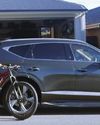
The International Council on Clean Transportation (ICCT) published, in late July, a report analysing the life cycle of emissions from Battery Electric Vehicles (BEVs) as opposed to ICE (Internal Combustion Engine) vehicles. But in Australia, there’s a perception to some that our reliance on fossil fuels is still high enough to offset any positive effect an EV might otherwise have. Time, then, for a localised fact check.
Key findings from the ICCT’s research includes a claim that EVs can produce anywhere between 19 and 68 percent less emissions than a petrol car depending on where the car was built and driven. Specifically, cars in India and China form the less effective half of this, while Europe and the USA are the upper half.
The report splits the average emissions produced for each stage of a medium-sized ICE car and EV. It shows that despite a clear emission increase in the manufacturing of the EVs and production of the electricity to run them, the massive amount of emissions produced through actually burning the fuel in ICE vehicles is often enough to dwarf the entire life cycle emissions of an EV.
This story is from the {{IssueName}} edition of {{MagazineName}}.
Start your 7-day Magzter GOLD free trial to access thousands of curated premium stories, and 9,000+ magazines and newspapers.
Already a subscriber ? Sign In
This story is from the {{IssueName}} edition of {{MagazineName}}.
Start your 7-day Magzter GOLD free trial to access thousands of curated premium stories, and 9,000+ magazines and newspapers.
Already a subscriber? Sign In

JAGUAR XE
JAGUAR WAVES GOODBYE TO LOWER-END PRODUCTS”

LOTS TO LIKE, NIGGLES TO FIX
MAZDA'S BOLDEST SUV YET WAVES GOODBYE, BUT IS IT A HIT OR A MISS?

THINGS THAT GO BUMP IN THE MORNING
ELLEN'S UP WITH THE LARKS BUT GETS AN UNWELCOME EARLY MORNING ALARM

LAND OF CONFUSION
OR HOW THE GENESIS GV80 STILL MANAGES TO KNOT THE BROWS OF THE UNINITIATED

CHARGE OF THE LIGHT BRIGADE
NAME YOUR TOP 10 HOT HATCHES AND WE’LL BET NONE OF THEM HAVE BATTERIES. THE ABARTH SO0E AND MINI COOPER SE AIM TO POWER INTO THAT OPPORTUNITY

Polar expresS
A DROP-TOP FERRARI ON THE COLDEST DAY OF THE YEAR? ANDY ENRIGHT RUGS UP FOR A FRESH BLAST THROUGH SOUTH GIPPSLAND'S FINEST ROADS

DYNASTY REUNION
AHEAD OF THE ARRIVAL OF THE GS0 BMW Mo, WE FIND OUT WHICH GENERATION OF MUNICH'S SUPER-SEDAN IS THE GREATEST EVER

FORD CAPRI
THE EV YOU ALWAYS PROMISED YOURSELF?

VOLKSWAGEN TOUAREG R
TOP-TIER TOUAREG DELIVERS WHAT YOU EXPECT FROM THAT R BADGE

MG 4 X-POWER
MG TAKES A MULLIGAN ON THE X-POWER